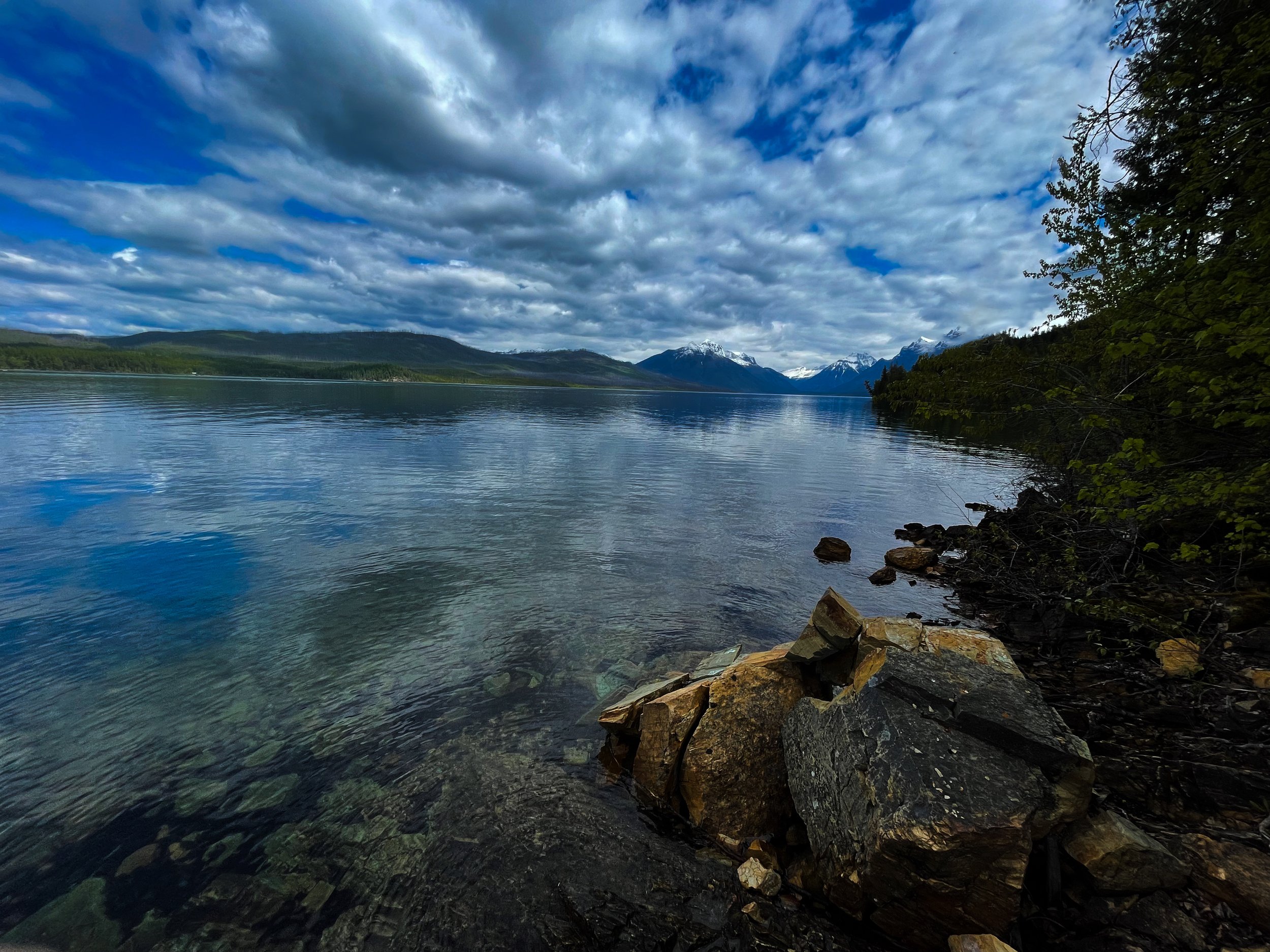Glacier
Glacier National Park, on of the crown jewels the National Park System. The combination of natural wonders, cultural history, and our shared border with Waterloo Lakes National Park in Canada contributed to Glacier being recognized worldwide as a World Heritage Site, a Biosphere Reserve, the world’s first International Peace Park, and the world’s first transboundary international Dark Sky Park.

The Changing Ecosystems
As ecosystems continue to change park managers try adaptive strategies to protect Glacier’s natural and cultural resources from these many layered threats. But we can all help. Learn how to reduce your carbon footprint while in Glacier by visiting park website.
Existing Threats
In northwest Montana, increasing temperature and changing precipitation patterns are creating change on the landscape. Lost of glacial ice, reduced snowpack, and warmer stream temperatures are a few examples. For native species, these changes add extra pressures to existing threats.
Layered Threats
Glacier hosts most of the same plant and animal species today that it did a century ago. Those plants and animals are called native species, and protecting them from threats is at the heart of its mission. Invasive species and climate change are two big threats to native species. But what’s more challenging is how these two threats interact.
Invasive species include plants, animals, and other organisms that are not native to an area, are destructive to the environment, and easily spread. These invasive species severely threaten native populations and the communities they support. For example, invasive plants and animals outcompete native species because they are extremely resilient. For example, invasive plants often adapt int hardier strains of the original plant to cope with the stresses of their new environment. In other cases, invasive species easily spread because they have no natural predators to help control their populations.


